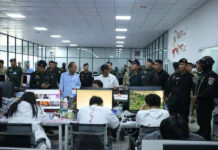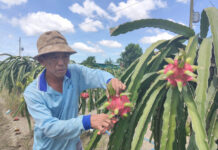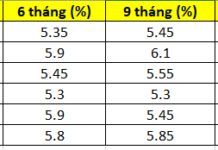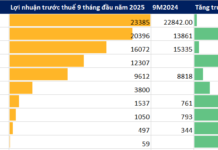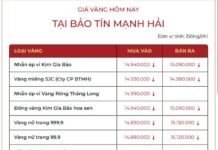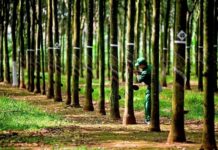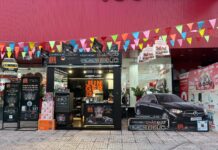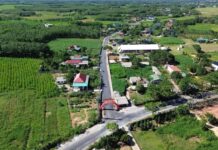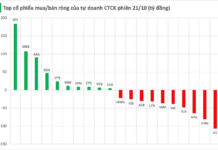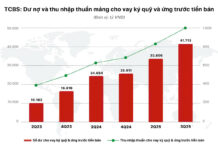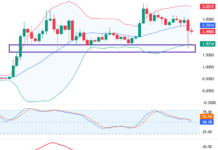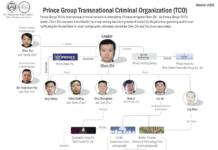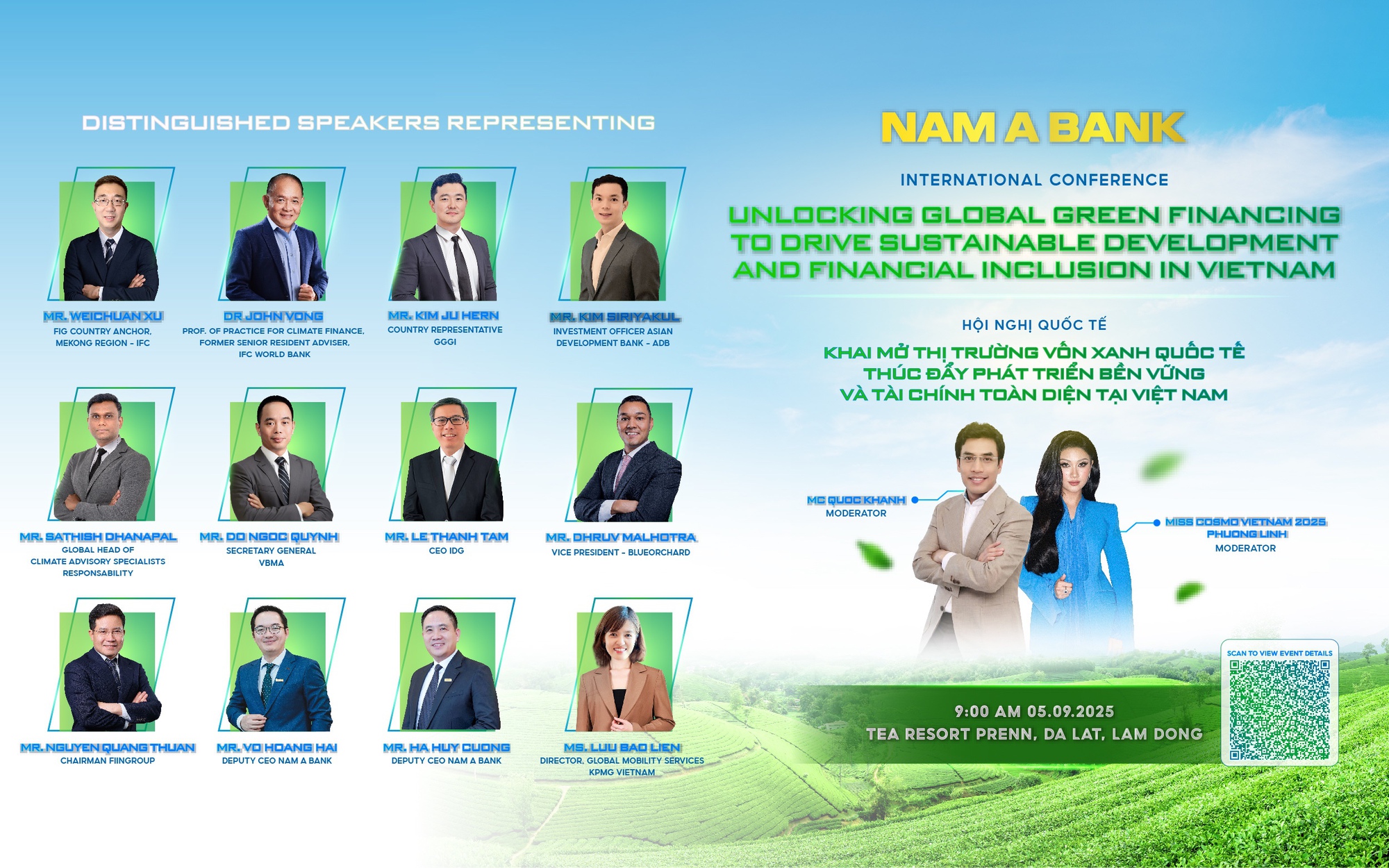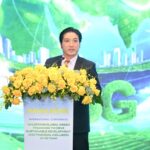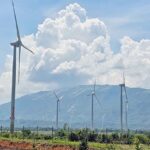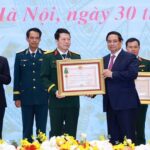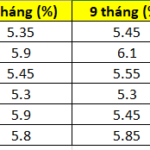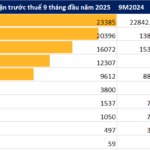On September 5th, Nam A Bank (coded NAB on HoSE) organized an international conference on “Unlocking International Green Capital Market – Promoting Sustainable Development and Financial Inclusion in Vietnam” at Tea Resort Prenn, Da Lat.
Following the vibrant discussions in Session 1 on “Unlocking International Green Capital Market,” Session 2 in the afternoon of September 5th continued with the theme “Promoting Sustainable Development and Financial Inclusion in Vietnam.”
Right after Session 2 was Session 3, themed: “Enhancing Capacity and Access to Green Capital for the Private Sector and Practical Lessons.”
This session featured international speakers from ADB, GGGI, and FiinGroup, along with representatives from regulatory agencies and industry associations. The content focused on extracting experiences from international green transition models and introducing financial tools to support sustainable and inclusive business development.
The conference also included a roundtable discussion where experts from ADB, FiinRatings, regulatory agencies, and industry associations, such as fisheries, tea, and rubber, shared practical experiences, success stories, and challenges in their journey towards green transition, thereby offering insights into promoting sustainable development in Vietnam.
Session 2: “Promoting Sustainable Development and Financial Inclusion in Vietnam”
ADB: Expected to allocate at least $100 billion for climate projects by 2030
Mr. Kim Siriyakul, Investment Specialist at the Asian Development Bank (ADB), shared the strategy and commitment to expand global green capital, with Vietnam being considered a key market.
According to ADB, from now until 2040, Vietnam needs to mobilize approximately $368 billion, equivalent to 6.8% of GDP annually, for projects related to climate and green transition.
The ADB representative stated that in its Strategy 2030, ADB plans to allocate at least $100 billion by 2030 to support climate projects. Simultaneously, 75% of its operations will back projects related to climate change mitigation and adaptation. Moreover, ADB affirmed its commitment to promoting gender equality, with at least 75% of its operational commitments having elements of women’s empowerment.
Notably, every $1 of ADB capital can ‘activate’ an additional $2.5 of long-term private co-financing, creating a strong leverage effect for Vietnam’s green finance market.
The ADB representative also provided practical examples from Vietnam. VinFast is a typical case where ADB, along with climate funds, provided $48 million to develop electric buses and charging stations, a significant step towards reducing emissions from the transportation sector, which accounts for 18% of Vietnam’s annual greenhouse gas emissions.
Another project is Hayat, which received a loan of 36 million EUR to build a factory producing baby diapers, wet wipes, and sanitary napkins. A notable aspect of this project is its accompanying gender action plan, aiming to enhance the well-being of women and children.
Additionally, LPBank received a loan of $80 million and results-based financing from ADB to expand credit for women-owned small and medium-sized enterprises. This project significantly increased the number of female customers accessing capital, especially in rural areas.
Vietnam has a strategic advantage to become a “green capital hub” in ASEAN
At the conference, Mr. Kim Ju Hern, Country Representative of the Global Green Growth Institute (GGGI), emphasized that Vietnam has a strategic opportunity to become a regional center for green capital.
The global green capital market is witnessing a trillion-dollar shift. In 2024, the issuance of green bonds globally surpassed $1,000 billion, with the Asia-Pacific region maintaining a steady growth rate for five consecutive years.
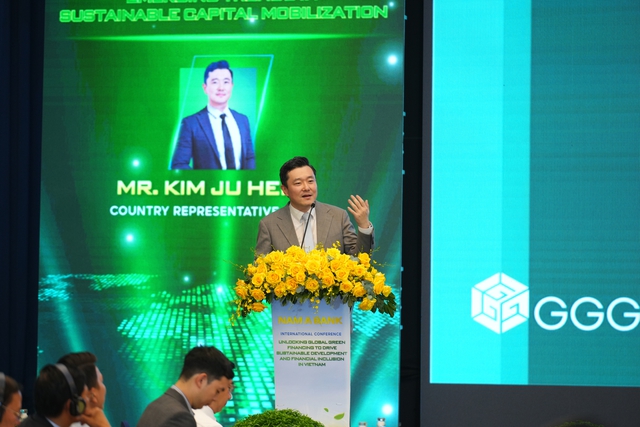
According to Mr. Kim, many international financial centers (IFCs), such as London, Luxembourg, Singapore, and Dubai, have been strongly shifting towards green finance. Their common denominator is a transparent legal framework, synchronized policies, and a high-quality workforce. He emphasized: “IFCs are not built with physical buildings but with trust, human resources, and capital.”
Regarding Vietnam, GGGI recognizes its strength in creating a pipeline of green projects, ranging from renewable infrastructure and low-carbon agriculture to climate technology startups. In the 2025–2027 period, GGGI plans to support more than 70 projects and climate technology startups in Vietnam, with the expectation of creating green assets attractive to international capital.
Mr. Kim affirmed that Vietnam has a strategic advantage to become a “green capital hub” in ASEAN.
PANEL DISCUSSION
Miss Cosmo VN 2025, Nguyen Hoang Phuong Linh, as the Green Transition Ambassador of Nam A Bank, shared that, from her perspective, sustainable development means that the current generation has a responsibility to protect and build a foundation for future generations.
She emphasized that her advantage lies in her ability to act as a relatable bridge to young people and the community, thereby strongly disseminating the message of sustainable development. According to Phuong Linh, everyone can start with very small choices in their daily lives, such as using environmentally friendly technology or prioritizing clean energy, to contribute to environmental protection and promote a green future.
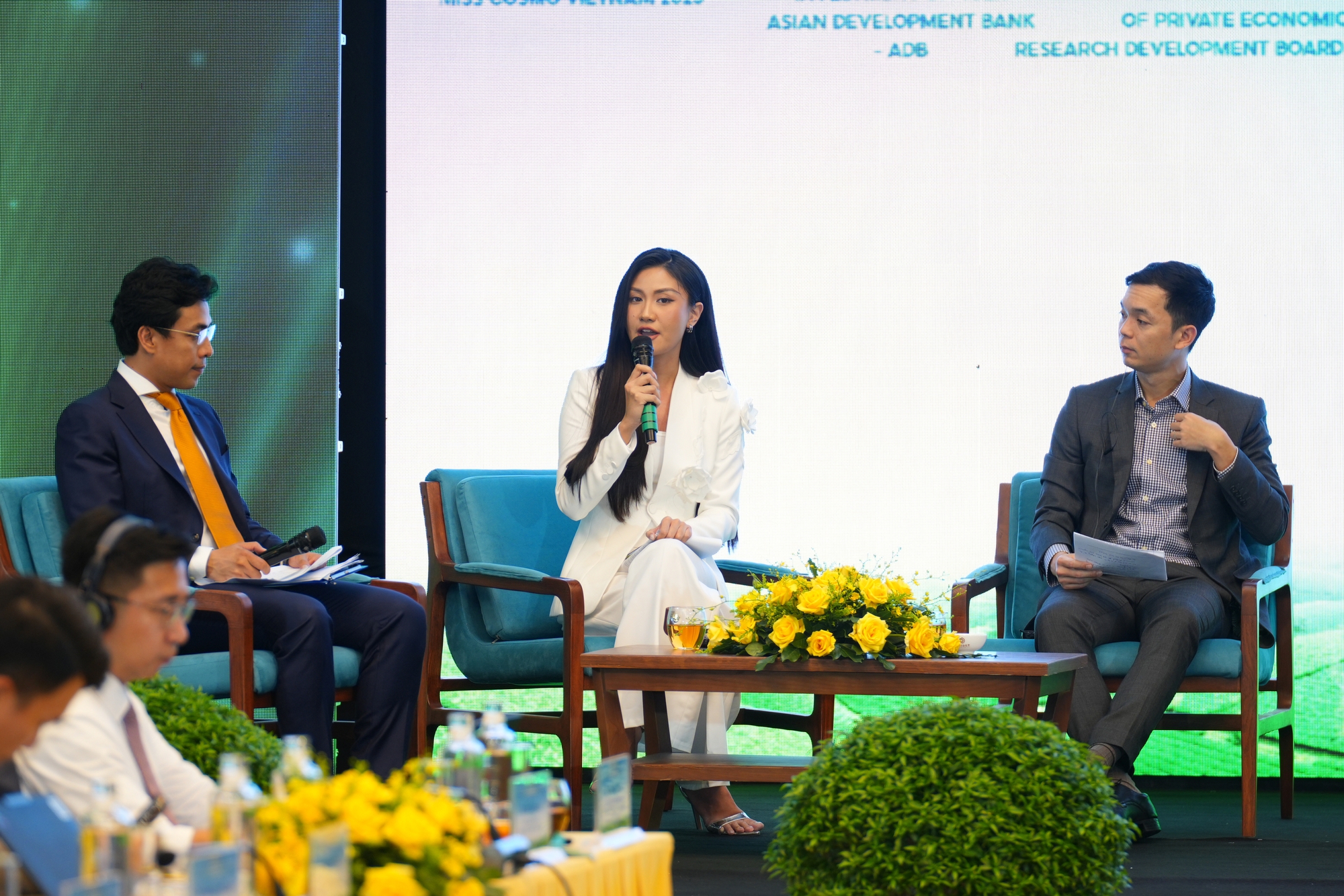
Miss Cosmo VN 2025 sharing her views on sustainable development from a youth perspective at the conference
Mr. Nguyen Hoai Nam, Secretary-General of the Vietnam Association of Seafood Exporters and Producers, also shared his passionate thoughts at the event. He stated that green finance is becoming increasingly important for businesses. However, he raised two critical questions.
Firstly, there are currently diverse interpretations of Industry 4.0 and green development. The term “green” is being used quite extensively, even to the point of abuse. In his opinion, it is essential to clarify the essence of the issue rather than merely chasing slogans.
Secondly, regarding preferential loan programs, Mr. Nam shared that he had participated in numerous programs on this topic, but after five years, how many enterprises have maintained their contracts?
Mr. Nam expressed that the seafood industry faces numerous tariff and non-tariff barriers and could be considered the most affected among export sectors. He mentioned that to export to the US, a shrimp has to bear four types of taxes, while enterprises also have to deal with a series of technical and management requirements that act as “green barriers.” Despite their efforts to improve and obtain various sustainability certifications, enterprises still struggle to meet all the requirements.
Mr. Nam believes that there is a reason why, despite its benefits, very few seafood enterprises participate in green finance. He hopes that, in the coming time, there will be a more favorable environment and suitable financial tools to help the seafood industry achieve sustainable development and enhance its international competitiveness.
Mr. Hoang Vinh Long, Chairman of the Vietnam Tea Association, informed that, in the past, many units in the industry had started the green transition, focusing on organic tea production and obtaining certifications such as RainForest, VietGAP, and organic certification according to Vietnamese standards. However, compared to the total cultivated area in the industry, the proportion of organic tea production remains modest.
In terms of processing, some enterprises have boldly invested in energy-saving and fuel-saving technology and built wastewater treatment systems, which are positive steps in the transition. Nevertheless, most small businesses still use outdated technology, consume a lot of energy, and face challenges in transitioning.
The Association’s representative emphasized that market pressure is mounting. The tea industry is not just a beverage sector but is also linked to consumption culture. Premium markets like Europe and Japan demand green certifications, compelling enterprises to adopt sustainable transition plans.
Recently, the tea industry has also started to pay attention to digital transformation, such as using blockchain for traceability, along with green transition. Some localities with key tea-growing areas have large enterprises that have obtained organic certifications, laying the foundation for the entire industry to move towards more sustainable production in the future.
During the panel discussion, other experts, including Mr. Bui Thanh Minh from the Private Economic Development Research Board (Board IV), Mr. Do Ngoc Quynh, Secretary-General of the Vietnam Bond Market Association (VBMA), Mr. Nguyen Viet Tuong, Vice Chairman of the Vietnam Rubber Association, and Mr. Kim Siriyakul from ADB, delved deeper into green transition models and the capital needs of various economic sectors.
Session 3: “Enhancing Capacity and Access to Green Capital for the Private Sector and Practical Lessons”
Green Transition is Not Just About Accessing Cheap Capital
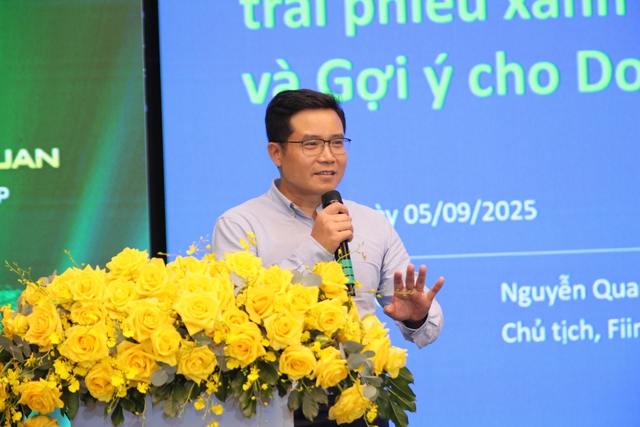
Mr. Nguyen Quang Thuan, Chairman of FiinGroup
In his paper, Mr. Nguyen Quang Thuan, Chairman of FiinGroup, mentioned that sustainable development and ESG are currently being strongly applied globally and in the region. International investors and partners increasingly demand ESG information and assessments when working with Vietnamese enterprises. Therefore, the green transition needs to be perceived from a broader perspective: not just for accessing cheap capital but as a path to enhance long-term value and competitiveness.
Regarding green standards, he argued that, in the short term, the financial benefits might not be evident for enterprises. However, in the long run, enterprises will enjoy more significant advantages in terms of tenure, capital cost, and access to global investors.
The expert emphasized an essential point: green bond issuance helps enterprises reduce capital costs. He cited AMRO research indicating that, in ASEAN, the interest rate for green bond issuance is 8–15 basis points lower than that of conventional bonds. In Europe, this figure is 3–7 basis points.
According to Mr. Thuan, even in Vietnam, some recent green bond issuances have recorded a cost saving of 1–2% compared to conventional bond issuances, considering both interest rates and related fees. Besides financial benefits, green bonds also enhance enterprises’ reputation, diversify capital sources, attract ESG investment funds, and improve risk management capabilities.
A core element for market transparency is independent assessment by third parties. This international practice aims to limit “greenwashing.” FiinRatings, authorized by the Climate Bonds Initiative (CBI), provides green bond confirmation. Additionally, the company offers Second Party Opinion, ESG scoring, and enterprise activity review services according to international frameworks.
PANEL DISCUSSION
Vietnamese Enterprises Will Learn Very Quickly If It Is Beneficial
In response to the moderator’s question about the most significant shortfall of Vietnamese enterprises in the green value chain regarding finance, expertise, and governance, Mr. Thuan, Chairman of FiinGroup, shared his insights:
He suggested perceiving the green finance market like a “bazaar” where there must be sellers, buyers, regulatory agencies setting rules, and intermediaries like banks, FiinGroup, or consulting firms. Therefore, the market’s development cannot solely rely on enterprises but requires a comprehensive and synchronized approach from multiple parties.
From an enterprise perspective, Mr. Thuan, as a business owner himself, stated that enterprises are very practical: if it is beneficial, they will learn very quickly, especially Vietnamese enterprises. Hence, the most significant shortfall is not expertise or financial tools but feasible projects with strong financial appeal to attract capital.
Nam A Bank Prioritizes Green and Digital Banking in Its Strategy
Mr. Ha Huy Cuong, Deputy General Director of Nam A Bank, shared that the bank’s journey towards building a green finance foundation did not start recently. In fact, concepts like green finance, circular economy, and inclusive finance have been discussed since 2011–2013. The government’s Net Zero commitment has opened up a vast development space, as Vietnam needs nearly $400 billion to achieve this goal, equivalent to about 50% of the total credit outstanding of the entire system. This presents both a challenge and an opportunity for financial institutions to engage and drive industries to catch up with new trends.
According to Mr. Cuong, Nam A Bank has prioritized green and digital banking in its strategy. In the context of global trends, banks that lag will face difficulties. Therefore, Nam A Bank must prepare its capabilities to stay ahead. “We do not claim to be the largest or the best in green lending, but we are recognized as one of the pioneering banks,” said Mr. Cuong.
The panel discussion also included the participation of experts and business representatives such as Ms. Nguyen Thi Hai Binh, CEO of STP Group; Mr. Vo Quoc Khanh from EY; and Mr. Pham Hung Vinh, Global Strategy and Development Director of the Doi Dep Ecosystem Brand…
Unlocking Green Finance in Vietnam: From a “Common Language” to an International Financial Center
Experts have outlined a clear roadmap to boost sustainable investment in Vietnam. The government’s introduction of a “common language” is seen as a breakthrough policy move, while the future establishment of an International Financial Center is expected to be the “key” to enhancing transparency and investor confidence. These foundational solutions aim to bridge the gap between the massive capital requirements for Net Zero goals and the current market’s modest size.
“The Prestigious Honor: MB Receives the First-Class Defense Order of the Country”
On August 30, 2025, in Hanoi, Prime Minister Pham Minh Chinh chaired the conference “80 Years of Businesses Accompanying the Nation.” This significant political and economic event gathered leaders from central ministries, sectors, and over 250 outstanding enterprises.
Don’t Be Mechanical: Applying International Standards to Vietnam’s Green Finance
“Over the years, Nam A Bank has been a strong advocate for green finance, and Mr. Vo Hoang Hai, the bank’s Deputy General Director, shared three key lessons learned during this journey at the International Conference on September 5th, with the theme ‘Unlocking the International Green Capital Market’.”



